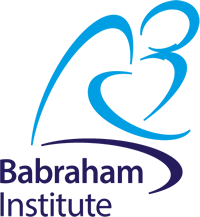About the Project
Please click on the Babraham Graduate Programme button above for details of how to apply for this project.
Trophoblast Stem Cells (TSCs) are a self-renewing stem cell population derived from the early embryo that can give rise to all cell types of the placenta. They are an invaluable research tool for our understanding of developmental defects and pregnancy complications. Yet the critical factors required for maintaining the self-renewal potential of TSCs are still fairly poorly explored. This project will build on recent exciting insights from our lab that have identified novel genes that likely act as regulators of the stem cell state in TSCs. You will manipulate candidate genes by CRISPR-Cas9 mediated knock out technology, and screen arising mutant colonies for their self-renewal ability, the rate and trajectory of differentiation and epigenomic changes by high-throughput sequencing. This project involves a range of state-of-the-art techniques, including stem cell culture methods, CRISPR gene knockout strategies, cell sorting by flow cytometry, differentiation assays, quantitative PCR analyses, and other essential molecular biology techniques.
The insights gained will be instrumental to advance research into the regulation of stem cell plasticity and developmental potency. You will be working in a collaborative lab environment in which all key techniques needed for this project are established, including cutting-edge gene editing and epigenetic modification profiling techniques as well as bioinformatic methods for their analysis.
Lab Website: http://www.babraham.ac.uk/our-research/epigenetics/myriam-hemberger
Lab Twitter Account: @HembergerLab
References
Recent publications:
1. Turco M.Y., Gardner L., Hughes J., Cindrova-Davies T., Gomez M.J., Farrell L., Hollinshead M., Marsh S.G.E., Brosens J.J., Critchley H.O., Simons B.D., Hemberger M., Koo B.-K., Moffett A. and Burton G.J. (2017). Long-term, hormone-responsive organoid cultures of human endometrium in a chemically defined medium. Nature Cell Biology, doi: 10.1038/ncb3516. [Epub ahead of print].
2. Latos P.A. and Hemberger M. (2016). From the stem of the placental tree: trophoblast stem cells and their progeny. Development, 143: 3650-3660.
3. Murray A., Sienerth A. and Hemberger M. (2016). Plet1 is an epigenetically regulated cell surface protein that provides essential cues to direct trophoblast stem cell differentiation. Scientific Reports, 6: 25112.
4. Lee C.E.Q., Gardner L., Turco M., Zhao N., Murray M.J., Coleman N., Rossant J., Hemberger M. and Moffett A. (2016). What is trophoblast? A combination of criteria define human first trimester trophoblast. Stem Cell Reports, 6 :257-272.
5. Branco M.R., King M., Perez-Garcia V., Bogutz A.B., Caley M., Fineberg E., Lefebvre L., Cook S.J., Dean W., Hemberger M.* and Reik W.* (2016). Maternal DNA methylation regulates early trophoblast development. Developmental Cell 36: 152–163. *Co-senior authors.
6. Latos P.A., Sienerth A.R., Murray A., Senner C.E., Muto M., Ikawa M., Oxley D., Burge S., Cox B. and Hemberger M. (2015). Elf5-centered transcription factor hub controls trophoblast stem cell self-renewal and differentiation through stoichiometry-sensitive shifts in target gene networks. Genes & Development, 29: 2435-2448.
7. Kubaczka C., Senner C.E., Cierlitza M., Araúzo-Bravo M.J., Kuckenberg P., Peitz M., Hemberger M. and Schorle H. (2015). Direct induction of trophoblast stem cells from murine fibroblasts. Cell Stem Cell, 17: 557-568.
8. Latos P.A., Goncalves A., Oxley D., Mohammed H., Turro E. and Hemberger M. (2015). Fgf and Esrrb integrate epigenetic and transcriptional networks that regulate self-renewal of trophoblast stem cells. Nature Commun., 6: 7776.

 Continue with Facebook
Continue with Facebook

